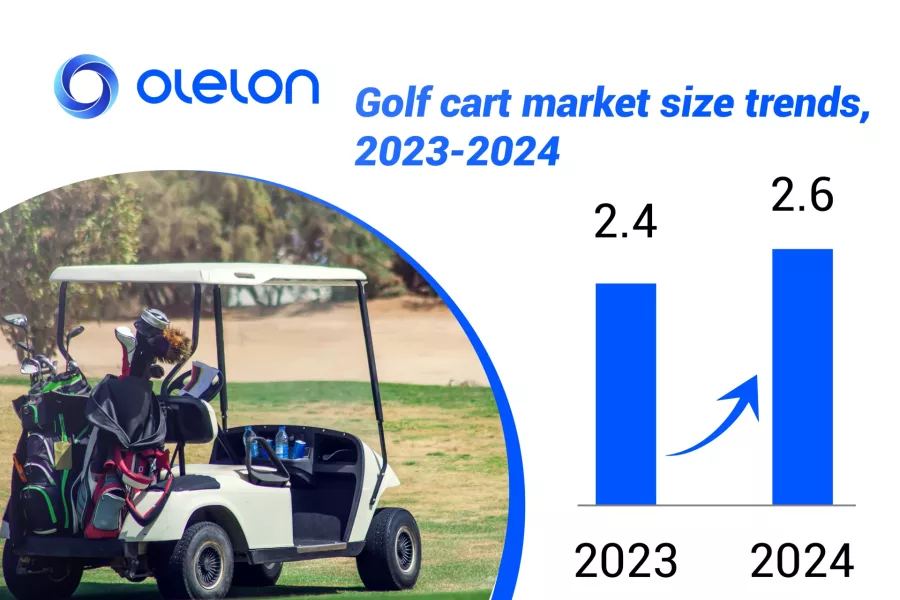Golf Cart Market Analysis and Latest Trends (2024-2034)
1. Market Overview
The global golf cart market is expanding due to increasing demand for eco-friendly transport, growing golf tourism, and applications beyond golf courses. In 2024, North America dominates the market, with the U.S. accounting for 73% of regional sales, driven by extensive golf infrastructure and rising adoption in residential and commercial sectors. Additionally, government incentives for electric vehicles (EVs) are boosting demand for electric golf carts【1】【2】.
2. Key Market Segments
- Personal/Residential Use: The fastest-growing segment, making up 49% of the market, fueled by gated communities and smart residential projects【1】.
- Golf Courses: A major segment, supported by an increasing number of golf courses and growing golf tourism【1】.
- Commercial Use: Covers airports, resorts, hotels, theme parks, hospitals, and universities, where golf carts are used for transportation and logistics【1】.

3. Fuel Type Trends
- Electric Golf Carts: The dominant category, supported by environmental policies, improved battery tech, and lower operating costs【1】.
- Gasoline Golf Carts: Still in use where higher power and extended range are needed【1】.
- Solar-Powered Golf Carts: A niche but growing segment, particularly in sustainability-driven markets【1】.
4. Regional Market Trends
- North America: The largest market, with a projected 6% CAGR from 2024-2029, supported by government policies promoting EV adoption【1】【2】.
- Europe: The UK leads with 29% of the European market, focusing on electric golf carts due to stringent emission regulations【1】.
- Asia-Pacific: Japan, China, and India are key players, driven by golf tourism and luxury resorts【1】.
5. Policy and Industry Drivers
✅ Growth Drivers:
- Rising demand for eco-friendly, electric, and solar-powered golf carts.
- Expansion into urban and commercial applications.
- Government incentives promoting electric vehicle adoption【2】.
⚠️ Challenges:
- High upfront costs of advanced electric golf carts.
- Limited charging infrastructure in some regions【1】.
6. Government Support and Policy Trends
The U.S. government is actively supporting EV adoption, which directly benefits the electric golf cart market. Key initiatives include:
- Tax Credits & Incentives: The U.S. offers tax credits of up to $7,500 for EV purchases, making electric golf carts more affordable【2】.
- Infrastructure Investment: A $7.5 billion investment in charging stations under the Infrastructure Investment and Jobs Act will make electric golf carts more practical【2】.
- Zero-Emission Mandates: California’s Zero-Emission Vehicle (ZEV) program requires a percentage of sales to be electric, influencing manufacturers to prioritize EV production【2】.
Additionally, President Joe Biden’s interest in clean transportation aligns with sustainable mobility goals, indirectly supporting electric golf carts as an eco-friendly alternative【0】.
7. Competitive Landscape
Major players include Yamaha, Club Car, EZ-GO, Polaris Industries, STAR EV, and Cushman, focusing on improving battery life, smart connectivity, and sustainability【1】.
8. Olelon Lithium Batteries – Driving the Future
Olelon is seizing the opportunity to lead in the lithium golf cart battery market. With its high-performance, long-lasting lithium batteries, Olelon helps dealers, repair shops, and retrofit businesses grow their revenue by offering reliable energy solutions. The company welcomes distributors and partners to join in expanding the market for cutting-edge golf cart batteries.
Would you like a PowerPoint presentation summarizing these insights? I can create a structured PPT with visuals and key data points.
Golf Cart Market Analysis and Latest Trends PPT

